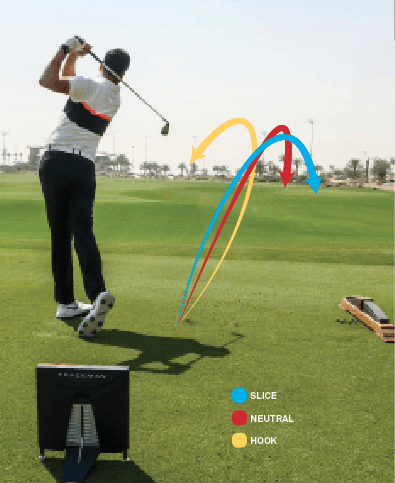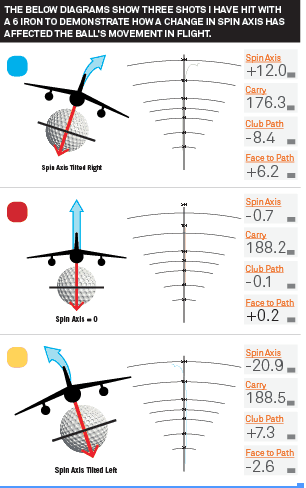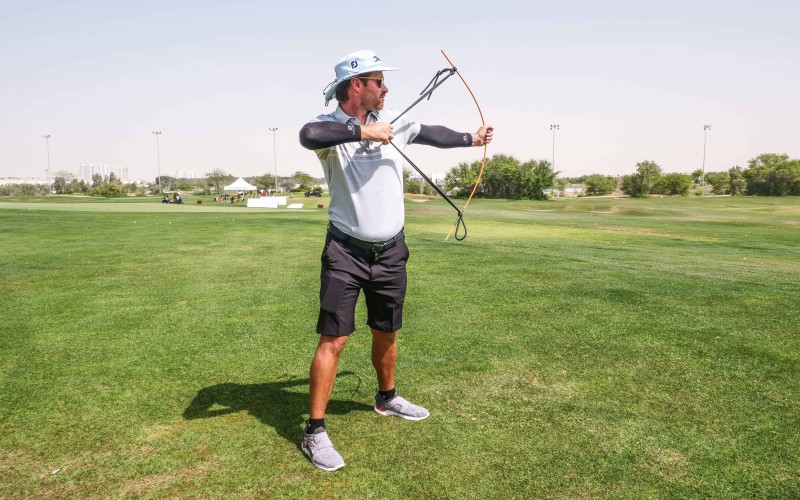Frequently during golf coverage on the television, we hear players talking about tightening their ‘numbers’. More and more we are seeing top players using technology such as Trackman to analyse their impact position and work towards improving their numbers to manipulate their ball flight.
In this article, the Trump International Golf Club’s PGA Professional, Mike Bolt, uses Trackman and some simple figures to explain where that unwanted curvature in flight comes from and how tightening your impact numbers can improve your control over your ball flight.
What To Look Out For

In this instance the spin axis was manipulated through changing the club path (effectively cutting across the ball or swinging more from the inside) and changing the clubface’s aim in relation to the path the club is travelling on when making contact with the ball. If you are somebody who suffers with a slice or a hook, altering your clubface aim in relation to your swing path during impact can help reduce/control your spin axis.

In general, a spin axis of -2 to +2 would see very little curvature on the ball in flight. The higher the spin axis number, the more you will see your golf ball move from left/right or right/left. The Trackman figures above illustrate this, showing as spin axis changes the ball takes a completely different flight pattern, from a slice to a hook and finally a straight shot.
By identifying your spin axis numbers you will be able to look at the factors contributing to the flight, with the ultimate aim of getting the number much closer to 0 or in some cases even turning that dreaded slice into a draw!
Spin axis
When speaking with golfers who complain about suffering with slices, hooks or generally controlling the golf ball, the statistic we often start with is ‘spin axis’. Spin axis simply represents the amount of curvature there is during a golf shot.
Flight Path
The spin axis can be associated to the wings of an airplane. If the wings of an airplane are parallel to the ground, this would represent a zero-spin axis and the plane would fly straight. If the wings were tilted to the left, this would represent a negative spin axis and the plane would bank/curve to the left, and vice versa if the wings are tilted to the right.
In Conclusion
If you experience any of the above ball flights and would like to learn more about your impact numbers and how to control or manipulate curvature on the golf ball, we would be delighted to see you at the Trump International golf club, Dubai Academy soon.














